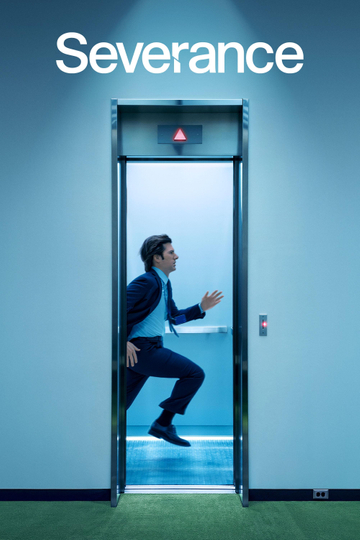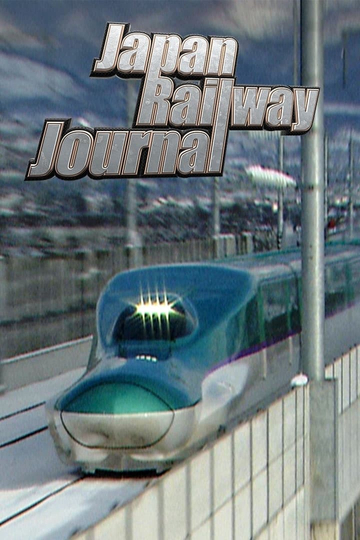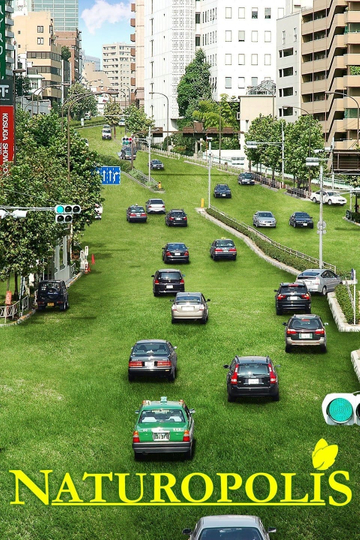Season 5 Episodes
1. New Year Trains: Beginning the New Year with a Journey
New Year is a special time in Japan with many unique traditions. There are special postcards and special foods, visits to shrines and temples, and even special trains. In this episode, see the "Hatsumode Train" operated by Kintetsu Railway which runs from Nagoya to the famous Ise Jingu Shrine in Mie Prefecture so passengers can give a first prayer of the year, and the "First Sunrise Train" operated by Sanriku Railway in Iwate Prefecture. From this special train, passengers can see the very first sunrise of the New Year over the Pacific Ocean.
2. JR Gono Line: A Popular Local Line Worth the Journey
JR East's Gono Line, which runs between Akita and Aomori Prefectures, currently boasts 3 popular tourist trains with the name "Resort Shirakami," attracting more than 100,000 passengers annually. Once facing discontinuation, the line has made a comeback with the support of JR East staff, and local residents living along the line. See how a local line running in a depopulated region has become Japan's most popular local line.
3. Amaterasu Railway: A Tourist Attraction Making the Most of a Discontinued Line
Amaterasu Railway was a third sector company located in Takachiho Town in the northern part of Miyazaki Prefecture. However, in 2005 the line was severely damaged by a typhoon causing all services to cease. Following the closure, local supporters reopened the line as a tourist spot. The main attraction of the line is a refurbished mini truck that runs through a beautiful green landscape before crossing a 105m high railway bridge (the highest in Japan). See how Amaterasu Railway has been attracting visitors from all over Japan. Then, in "Trains in Focus" join us on JR's "Umisachi-Yamasachi" tourist train that also operates in Miyazaki Prefecture.
4. Yamanote Line: Tokyo's Ever Evolving Loop Line
The JR Yamanote Line is a 35km loop line that runs around central Tokyo carrying 3.5 million passengers per day. During the morning rush hour, 48 trains operate every 2 minutes, the punctual operation of which is overseen from an operation control center that makes use of the latest systems. At the Tokyo General Rolling Stock Center, a total of 550 vehicles are inspected and maintained. See how these 2 facilities support the accurate and safe operation of Tokyo's busiest line. Then, join us at the construction site of Takanawa Gateway Station scheduled to open in 2020.
5. JR Hokkaido's Yubari Line: A Beloved Local Line Comes to an End
On April 1, 2019, the Yubari branch of JR Hokkaido's Sekisho Line is sadly coming to an end. Back in the days, Yubari was a prosperous mining town and the line was a major route for transporting coal. But from the 1970's the mines began to close and the city started to decline. In recent years, the line only operated 5 round trips per day. With news of the line's closing, many railfans came to ride the line and the locals showed their appreciation by gifting handcrafted souvenirs. See the last moments of this beloved line and the challenges local lines are facing in Japan.
6. Tokyo Metro: A Subway Network On Time & On Track
Tokyo Metro operates 9 subway lines with a network stretching a total of 195km. Connecting to a number of main stations in Tokyo on both private and JR lines, Tokyo Metro carries 7.4 million passengers and makes 5,700 trips per day. To handle the demands of such a high-density line, operating schedules are broken down into 5-second increments. We go behind the scenes to find out how the drivers are trained to operate such a precise schedule. Also, see how Japan's very first subway line is being transformed using the latest technology.
7. Nishi-Nippon Railroad: Fine Dining on an Even Finer Tourist Train
Nishi-Nippon Railroad's first tourist train "The Rail Kitchen Chikugo" began operating in March 2019 in the Kyushu region. The train, which is a showcase of traditional craftsmanship, features an open kitchen where a variety of dishes made from local produce are prepared. Come behind the scenes as we take an in-depth look at the development of this new train, and how the company will compete with the 11 tourist trains already operating in the region. Then in "Hands-on Railway History," we visit the Kyushu Railway History Museum where precious vehicles from Kyushu are on display.
8. Hiroshima Electric Railway: On Track on the Streets
Since the 1960's Japan's streetcar numbers have fallen into decline due to an increase of cars, subways, and railway lines. However, to meet the aging population's need for safe and convenient public transport, streetcars have been making a comeback. See how Japan's largest streetcar operator, Hiroshima Electric Railway, is using second-hand vehicles collected from across Japan as well as modern trams to meet the demand. In "Trains in Focus," join us on the adorable Chuggington train that runs on the Okayama Electric Tramway.
9. Hankai Tramway: Osaka's One & Only Tram Network
With a history of more than 100 years, Hankai Tramway, which connects Osaka City and Sakai City, is the only tram operator in Osaka Prefecture. With 2 other companies connecting the cities, Hankai Railway's ridership fell into decline, and just 10 years ago the section connecting Osaka City and Sakai City was in danger of closing. See how the company's ridership has increased with local government support. Also, see the company's new ultra-low-floor vehicle as well as Japan's oldest tram.
10. Choshi Electric Railway: Finding New Ways to Get Back on Track
Choshi Electric Railway operates a 6.4km line in Chiba Prefecture. This beloved local line services around 20,000 people who live in the area. However, with a low population and a declining birthrate the line has been in constant danger of closing. See some of the ideas the company's president has come up with, such as auctioning off station names, operating fun trains, and even producing a movie, to keep the company on track.
11. JR Osaka Loop Line: Developing a Better, More User-Friendly Line
JR West's Osaka Loop Line is the main artery for public transport in Osaka. 13 of the line's 19 stations connect to subways and major private railways. Unfortunately, there were complaints that the stations are now too old and inconvenient to use. In response, JR West began the "Osaka Loop Line Development Project." The company introduced a new 3-door train and began renovating the station buildings and platforms. See JR West's efforts to develop a better, more passenger-friendly line. In "Trains in Focus" join us on the Hello Kitty wrapped "Kansai-Airport Express Haruka," and the cute Hello Kitty Shinkansen.
12. Kyoto Tango Railway: A Bus Company to the Rescue
Kyoto Tango Railway is a 114km line located along Amanohashidate, one of the 3 most scenic spots in Japan. Once the most in deficit railway company in Japan, it is now managed by the Willer Group, a long-distance bus operator. Through a process known as "vertical separation," Willer has taken over the day-to-day operation of the railway, while the local government maintains its infrastructure. See how Willer is transforming the local railway company using marketing and IT strategies.
13. South Hokkaido Railway: A Tourist Train Developed by a Tour Company
South Hokkaido Railway is home to a popular tourist train. A third sector company, South Hokkaido Railway began operation in 2016 with the opening of the Hokkaido Shinkansen. With limited resources, the railway asked a major tour company to help develop and operate a tourist train. See how the company worked with the community, and used their know-how to turn a "regular" train into a fun tourist train that has been gaining attention across Japan.
14. Chizu Express: A Top Tier Third Sector Railway
Chizu Express is a third sector local railway, which runs 56.1km through the Chugoku Mountains between Tottori and Hyogo Prefectures. From the beginning, the railway was constructed for high-speed operation. While many third sector railway companies are struggling to make a profit, Chizu Express has been in the black for 21 consecutive years. See how the company is able to run through the mountains at 130km/h with their pendulum type express trains, as well as the company's strategies to increase ridership on their local trains. In "Trains in Focus," hop on JR West's "Ametsuchi" tourist train that runs between Tottori and Izumoshi Stations.
15. Hitachinaka Seaside Railway: Pulling Together with the Local Community
Hitachinaka Seaside Railway in Ibaraki Prefecture opened in 2008. When it began operation, the 14.3km railway had a ridership of less than 700,000. Now, ridership exceeds 1 million annually. Making a profit in 2017, the company now plans to extend the line by 3.1km. See how the company is working with locals to increase ridership even further, and how the company's president is putting passengers first.
16. JR's Ekinaka Development Project: A New Lifestyle Below the Chuo Line
"Ekinaka" refers to the shops and facilities that are usually found inside the station. Now JR East is expanding on that concept, developing the viaducts beneath the Chuo Line in a project they are calling the "Chuo Line Mall." Utilizing the 70,000 square meters of open space beneath the railway, 5 stations are working to develop new shops and facilities that will greatly benefit the community. See how JR East's "Ekinaka" development strategy is bringing the towns and stations closer together.
17. Introducing the N700S: JR Central's Next-Generation Shinkansen
JR Central's long-awaited next-generation Shinkansen; the N700S is scheduled to begin operation in summer 2020. The new N700S makes use of state-of-the-art technology to enhance safety, convenience, and comfort. Changes include the addition of lithium-ion batteries, used to power an emergency self-propulsion system, and a fully active vibration control system, installed to improve the comfort of the ride. Join us as we look at how the Shinkansen has evolved over the years and get a sneak peek of this supreme new train.
18. New Technology Opening the Future of the Railway
Railway companies in Japan are shifting toward the use of artificial intelligence and IoT systems to improve services. Responding to the increasing number of retiring railway employees and support staff, Japanese railways are finding new ways to operate, using state-of-the-art technology such as the Yamanote Line's one-button automatic train operation. Join us at "Mass-Trans Innovation Japan 2019" to see what new technologies are being utilized in the ever-evolving railway industry.
19. Reviewing the New Trains of 2019
Many new express, commuter and tourist trains, as well as trams, began service in 2019. Join us as we take a look back at the trains and trends. See the innovative designs of Seibu Railway's "Laview" and the "Series 2000" on Tokyo Metro's Marunouchi Line as well as tourist trains like "THE RAIL KITCHEN CHIKUGO" operated by Nishi-Nippon Railroad and "Kairi" by JR East. Also, see the "Greenmover APEX" tram operated by Hiroshima Electric Railway, which received the "2019 Good Design Award," as well as Okayama Electric Tramway's "Chuggington." All of this and more as we take a look back at the trains and trams of 2019.







































